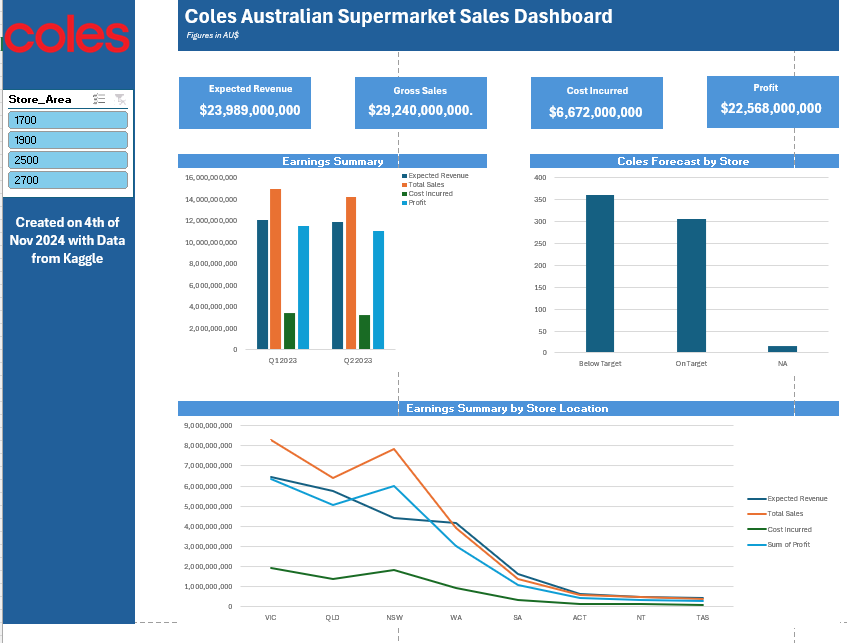Coles is a prominent supermarket, retail, and customer service brand in Australia, with over 800 stores nationwide and a 27% share of the market. As a key player in the Australian retail landscape, it caters to millions of customers by providing a wide range of products and services. Its extensive presence and significant market influence make it a critical point of study for business analysis.
The Coles dataset, sourced from Kaggle, offers a valuable sample of data that reflects the company’s operations, customer trends, and overall market performance. This dataset serves as a resource for conducting detailed analyses, enabling businesses and researchers to gain insights into purchasing patterns, inventory management, and regional sales dynamics.
Such data-driven insights are invaluable for making informed strategic decisions, whether for optimizing supply chains, enhancing customer experience, or identifying growth opportunities. By examining this dataset, stakeholders can uncover key trends, improve operational efficiency, and drive innovation in the competitive retail market.
In summary, Coles’ extensive operations and the availability of its dataset make it an ideal case study for understanding retail dynamics in Australia. The insights derived from this data can help shape impactful strategies for businesses operating in similar industries.
- Project Definition
- Excel and Findings
Business Context
TThe Coles dataset offers a comprehensive overview of store operations and sales performance for one of Australia’s leading supermarket chains, with over 800 outlets and a 27% market share. It includes two subsets: ColesStoreData and ColesSalesData. ColesStoreData contains store-specific information such as unique IDs, locations, customer counts, staff counts, and store areas. ColesSalesData focuses on financial performance, including expected revenue, gross sales, sales costs, and a sales forecast evaluating whether stores meet revenue targets. This synthetic dataset will be used to support market analysis, sales forecasting, and machine learning, enabling informed strategic decisions while ensuring data privacy.
Fields Names and Meanings
- Coles_StoreID – is a unique ID that uniquely identifies each store.
- Store_Location – provides information on the store’s location in different states.
- Customer_Count – is the average customer count accounted for in the store.
- Staff_Count – is the number of employees who work at the stores.
- Store_Area – is the store’s size, expressed in square meters.
- Expec_Revenue – is the Expected Revenue in $M a store is supposed to generate.
- Gross_Sale – is the Gross Sale in $M a store has generated.
- Sales_Cost – is the cost incurred in $M after the Sale has occurred.
- Targeted_Quarter – indicates the quarter within a fiscal year to which the sales data corresponds.
- Coles_Forecast – provides details about whether the store’s sales align with the expected revenue, specifically whether the net sales (computed as Gross_Sale – Sales_Cost) meet the expected goal. The forecasted values are determined based on predefined conditions. If the net sales equal or exceed the Expected Revenue, they are categorized as “On Target.” If they fall short of the Expected Revenue, they are categorized as “Below Target”.
This dataset offers valuable insights for Coles and its analysts to evaluate the financial health, valuation, and performance of each store. These metrics enable the analysis and comparison of various stores, supporting informed investment decisions based on performance.
Excel Result and Findings

Insight
- All Coles stores are profitable however the margins for ACT, NT, and TAS are marginal, further analysis may be required to understand why.
- A substantial number of Coles stores are performing below there expected target.
- There are slight drop in expected revenue, total sales, cost incurred, and profits from Q1 to Q2.